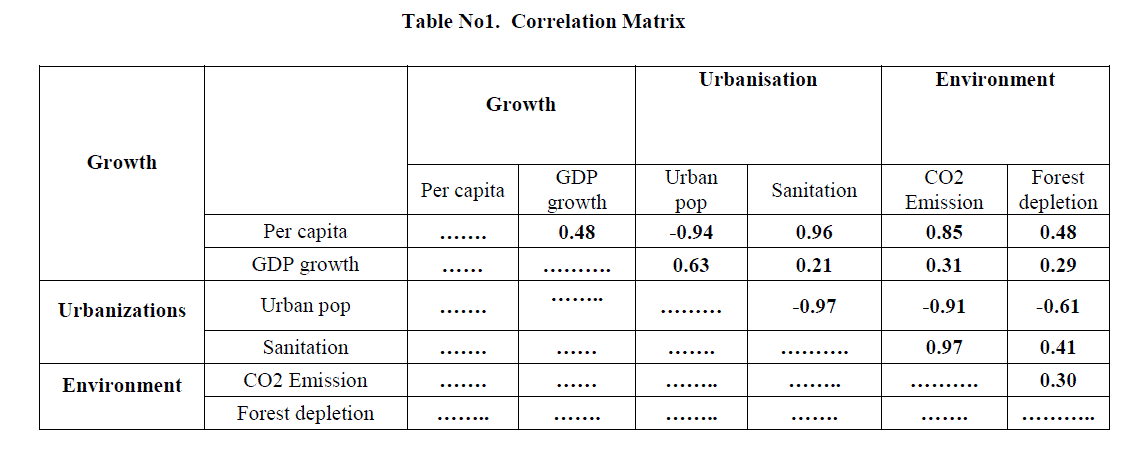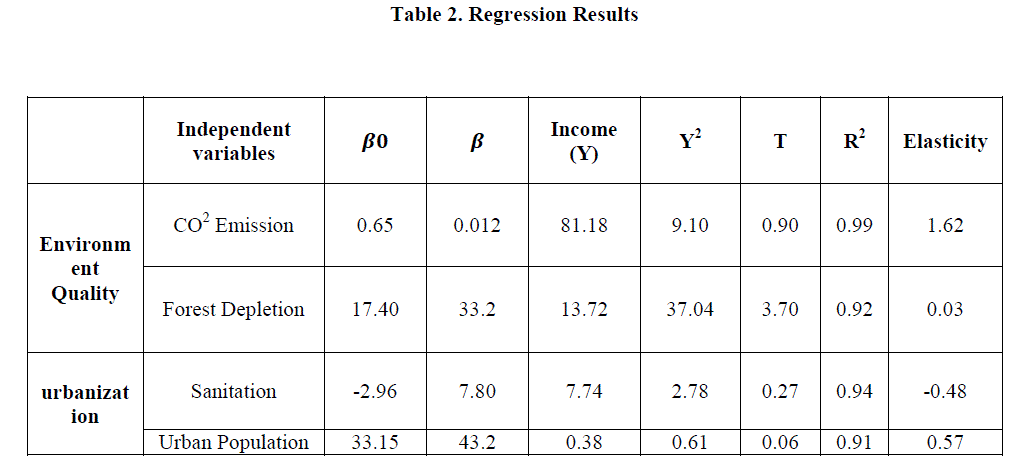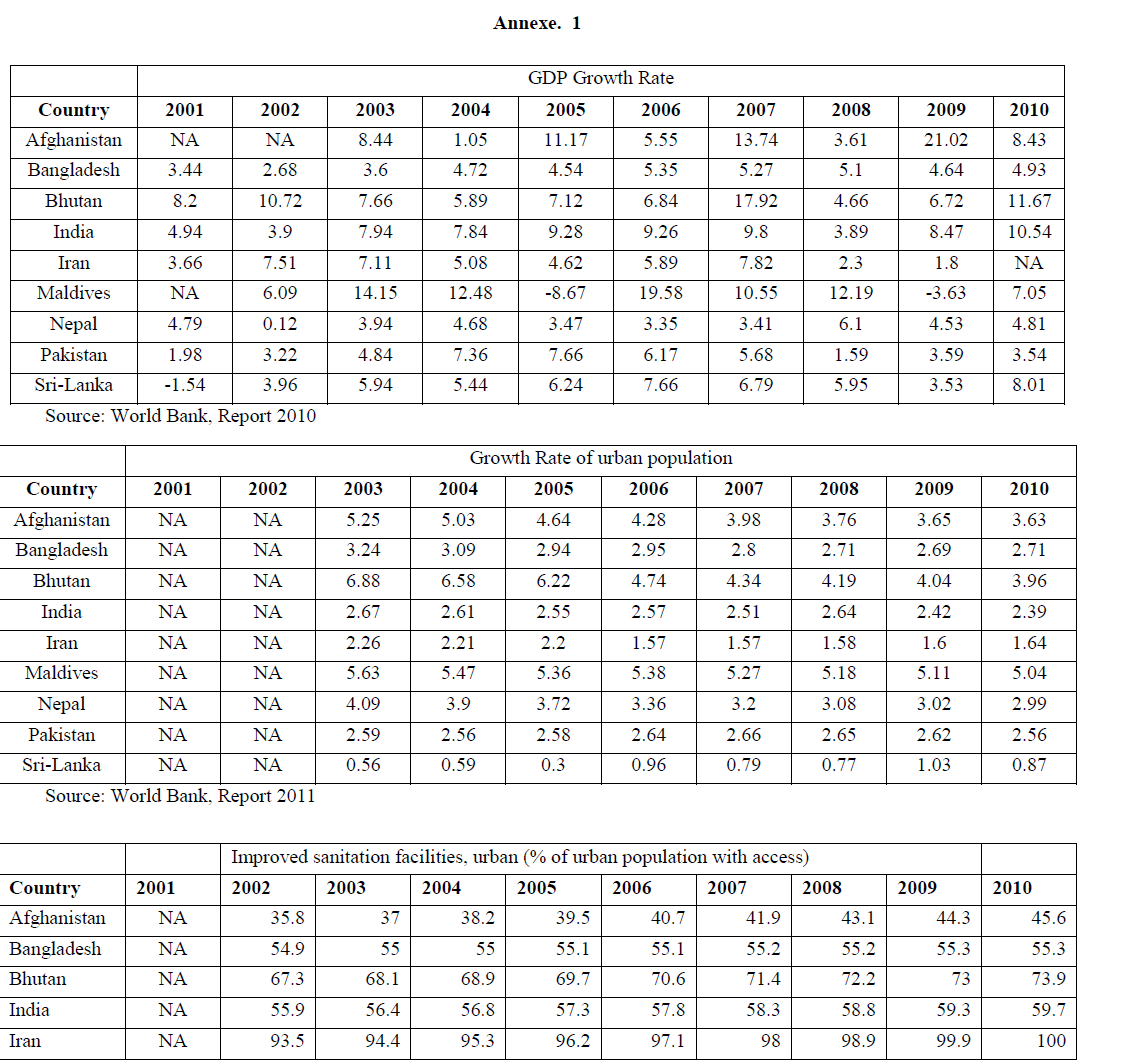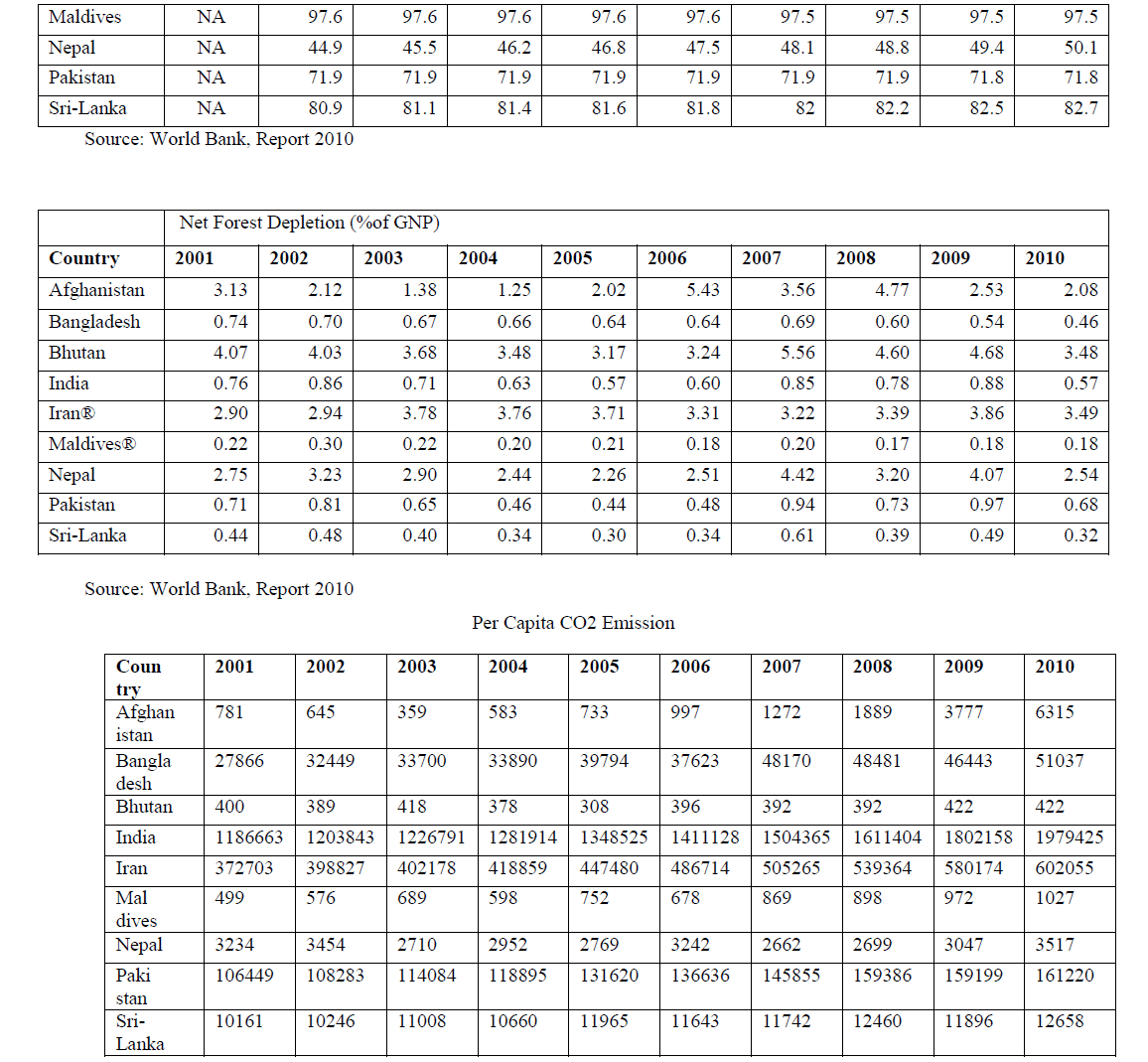ISSN ONLINE(2319-8753)PRINT(2347-6710)
ISSN ONLINE(2319-8753)PRINT(2347-6710)
A.D.Gade1, Dr.V.P.Katti2, R.A.Todkar3
|
| Related article at Pubmed, Scholar Google |
Visit for more related articles at International Journal of Innovative Research in Science, Engineering and Technology
The nexus between, urbanization, economic growth and environmental quality has been a source of great controversy for a very long time. There are two extreme views regarding this nexus. The first view demonstrates that rapid urbanisation and modernisation lead to expansion of economic activity. This greater economic activity or economic growth is inevitably leads to environmental degradation and consequently economic and ecological collapse. The second extreme approach has been demonstrates the view that those environmental problems worth solving will be addressed more or less automatically as a consequence of economic growth and modern urbanisation. This debate has still prolonged because of lack of substantial empirical evidence on how environmental quality changes at different income levels and at different level of urbanisations. Compilation of such evidence has been constrained by the absence of data for a large number of countries. At present, the situation is much improved and this paper takes a step of systematic analysis in exploring these nexus by using Log-linear, Log–lin and Lin-log models. Since it is very complex phenomenon, theoretically it is quite difficult to explore this nexus .However it is not impossible even though there are some problems exist like intercept value of variables and identification of dependent and independent variables. By considering available data of different indicators (from period 2001 to 2010) and with the help of econometric models an honest attempt is being made towards the exploring this casual nexus. Especially South Asian countries were considered for study and it arrived at conclusion that there is positive nexus between urbanisation and economic growth and on the contrary negative linkages are found between economic growth and environmental quality.
Keywords |
| Urbanization, GDP, GDP Per Capita, Improved Sanitation, Forest Depletion, Economic Growth, Environmental Degradation. |
I. INTRODUCTION |
| Urbanization refers to a process of transition of traditional economy into the modern economy. As a consequence of modernization, rapid and continuous urbanization has taken place in all over the world during the last century. Rapid industrialization or the localization of the industries and faster growth of population, highly degradation of natural resources, high standard of living cost, and high level of pollutant and level of pollution are the major distinctive features of modern urbanization. Since urbanization significantly contributing in economic growth by several way, in modern era of developing countries urbanization has becomes a key and an engine of economic growth. It has demonstrated by several studies that significant nexus prevails between urbanization and economic growth. But there is also another dark side of urbanization which cannot be neglected in modern concept of sustainable development. It is universal truth that rapid natural resource degradation has taking place in the process of urbanization. A very little empirical research has been conducted on the issue of urbanization, economic growth and environment nexus. Under this backdrop it is necessary to explore this spiral nexus in order to better management, planning and administration of the urban environment. The nexus between, urbanization economic growth and environmental quality has been a source of great controversy for a very long time. There are two extreme views regarding the is nexus. The first view has been demonstrates that rapid urbanisation and modernisation lead to expansion of greater economic activity. This greater economic activity or economic growth is inevitably lead to environmental degradation and consequently in economic and ecological collapse. The second extreme approach has been demonstrates the view that those environmental problems worth solving will be addressed more or less automatically as a consequence of economic growth and modern urbanisation. |
| This debate has still prolonged because of lack of substantial empirical evidence on how environmental quality changes at different income levels and at different level of urbanisations. Compilation of such evidence has been constrained by the absence of data for a large number of countries. At present the situation is much improved and this paper takes a step of systematic analysis in exploring these nexus by using available data. In order to make the study more intensive three basic models are used e.g. Log-linear, Lin –log and Log-lin. Since it is very complex phenomenon, theoretically it is quite difficult to explore this nexus .However it is not impossible even though there are some problems like intercept value of variables and identification of dependent and independent variables. By considering available data of different indicators (from period 2001 to 2010) and with the help of econometric models an honest attempt is being made toward the exploring this casual nexus. Especially South Asian countries were considered for study. |
II. OBJECTIVES OF THE STUDY |
| The major objectives of the present research work are as below. |
| 1. To observe the nexus between urbanization and economic growth, |
| 2. To examine the nexus between urbanization and environment, |
| 3. To explore the nexus between environment and economic growth. |
III. RESEARCH METHODOLOGY |
A) DATA SOURCE AND DATA COLLECTION |
| The present research is purely analytical type of research which exclusively relies on secondary data. The necessary data has been collected from the report of the World Bank. The collected data has been processed and tabulated by using Excel Software. The statistical tools such as , multiple correlation, log- linear regression equations are applied for data analysis and interpretation. The present paper has considered ten years period from 2001-02 to 2010-11 and attempts were made to examine the coiled nexus between urbanization, economic growth and environment quality in context of South Asian countries namely Afghanistan, Bangladesh, Bhutan, India, Iran, Maldives, Nepal, Pakistan and Sri Lanka. In case of absences of some indicators of time series data the panel data has been used. |
B) HYPOTHESIS |
| Following hypothesis have been formulated. |
| 1. The significant positive correlation prevails between economic growth and urbanization. |
| 2. There significant positive correlation exists between economic growth and level of pollution. |
| 3. There is significant negative nexus between urbanization and environment quality. |
C) REVIEW OF RESEARCH LITRATURE |
| Existing gathered literature has shows that there is positive relationship between urban areas (specifically, their share of national population) and level of economic development. Numerous studies have confirmed that there is positive relationship between per capita income and urbanization levels (Fay and Opal,2000; and Polese,2005).Other studies have repeatedly confirmed the disproportionate contribution of urban areas to national income and product(world Bank,1991).Many studies have verified the positive link between productivity and the agglomeration of economic activity in cities(Gleaser,2000,Krugman,2000 and Quigley,2007). On the contrary, Polese (2005) argues that, the relationship between urbanization and economic growth is weak at least in recent times, and as such does not foster growth of regionâÃâ¬ÃŸs economies. |
| Generally, there is exercised enormous control of cities over national economies. They provide jobs, access to the best cultural, educational and health facilities and they act as focal point for communication and transport which are necessary conditions for economic development of any nation. Although they also cluster massive demand for energy, generate large quantities of waste and concentrate pollution as well as social adversity. According to Todaro and Smith (2003), there is a close association between urbanization and per capita income. Including other economic development indicators it is one of the most observable and sticking fact to development process. According to Quigley,(2007),the economic and social crises that have enveloped most of the developing countries are as a result of urban growth without proportional economic development. To Quigley (2007), urbanization on one hand is destructive, while on the other, it is the base for development process of any region. |
| The relationship between urbanization has long popular issue of debate in the literature of economic development. Should a developing country encourage urbanization as a part of economic development strategy? Or is high rate of urbanization just necessary condition for economic growth? According to Rakodi (2004), cities of developing countries are faced with the challenges of rapid population increase with unaccompanied economic growth. The foregoing analysis clearly reveals that there is clear cut nexus between urbanization and economic development but the literature has not covered impact of urbanisation on the environment. |
| Recently the United Nation published “World Urbanization Prospects (2009)” and pointed out that 2010 is the break-even year of the world urban rural population. By the middle of 2009, the number of people living in urban areas (3.42 billion) had surpassed the number living in rural areas (3.41 billion) and since then the world has become more urban than rural. It is also stated that the growth rate of urbanisation in developing countries is more than developed countries. |
IV. THEROTICAL MODEL |
Economic growth and Environment Quality |
| According to Environmental Kuznet Curve there is invert U-shaped relationship between economic growth and environmental degradation. That is with the increase in economic growth, environmental degradation also goes on increasing and this process to be continue up to the potential or maximum economic growth level and then afterword it is not possible to further increase in economic growth with deteriorated natural resources. After this maximum growth every attempt of accelerating economic growth hampers natural resources without further increase in economic growth. In present study the same model has been tried to test empirically in context of above mentioned nine Asian Countries. The basic log linear models applied to explore the shape of the relationship between income and each environmental indicator. |
| ln E it = a0 + a1 ln Yit + a2Tt+a3 Fi eit (1) |
| Where E, is an indicator of environmental quality for country i at time t, Y is per capita income (Growth parameter), T is a time trend, F is the fixed effect for site-specific factors, and e is a stochastic error term (that any other random factor which affects on environment quality). Per capita income was defined in purchasing power parity terms. All variables are in logarithms unless otherwise specified in the data table. |
| For the measurement of slope we have, |
 |
Economic growth and urbanization |
| For the measurement of nexus between these two variables Log-lin model were used because it is very difficult to identify which is the dependent variable and which one is independent. |
| Therefore, |
 |
Urbanization and environment quality |
| For the measurement of nexus between these two variables Lin-log model were used. Therefore, we have |
| Yit =β1+ β2 ln Xt+β3+eit (3) |
 |
V. RESULTS OF THE STUDY |
| The major findings of the study are as below |
Correlation Results |
| 1) The economic growth and declining environment quality are strongly and positively correlated. |
| 2) It has also seen from foregoing analysis that economic growth and rate of urbanization are also positively correlated. |
| 3) Urbanization and environment are negatively and significantly correlated. |
 |
 |
Regression Results |
| 1) Regression results revels that at with the increase in per capita income level, environment quality goes to decline. |
| 2) As a consequence of economic growth rapid CO2 emission has been taken place in south Asian countries and one percent change in income level will leads to 1.65 percent change in CO2 emission. That has been proved by the regression table. |
| 3) Income elasticity of urban sanitation is -0.48, whereas in case of urban population it is 0.57. |
| 4) All the indicators are very strongly good fitness to the regression line (R2). |
 |
 |
References |
|